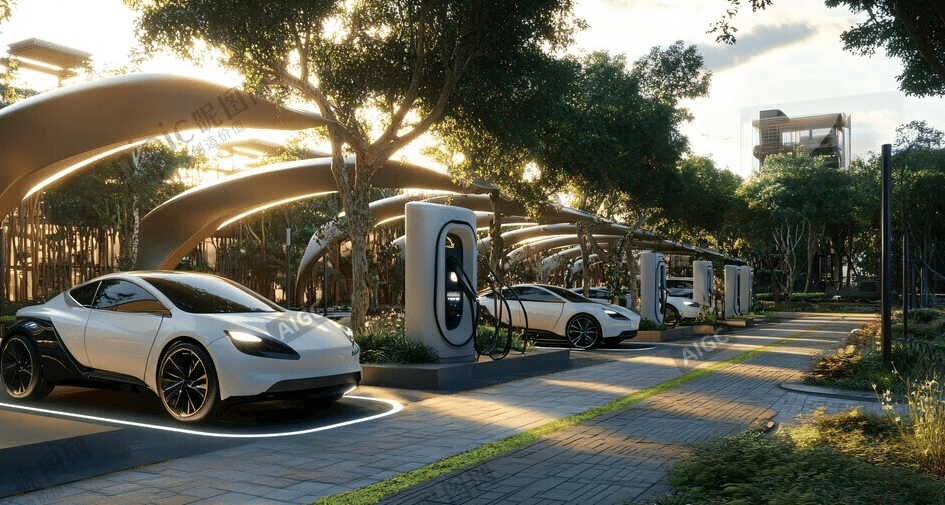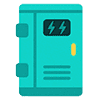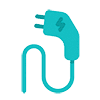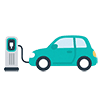
NEWS CENTER
How to Choose a Charging Station Adapter? Essential Adapters for Compatibility with Specific Vehicle Models
Still struggling with incompatible charging port connectors? Don’t worry! This guide walks you through identifying various charging adapter types, covering everything from principles to selection. It includes common interface types, compatible vehicle models, safety standards, and purchasing tips to help you effortlessly handle those awkward electric vehicle charging moments. Perfect for newbies, e-bike riders, RV enthusiasts, and multi-vehicle households. Practical guide + pitfall warnings—become a charging pro in no time!
What is a charging adapter? What exactly does it do?
Simply put, a charging adapter is your electric vehicle’s “universal plug adapter” . When your electric car or motorcycle can’t directly plug into a charging station—say, the station uses a GB/T (Chinese standard) connector but your vehicle uses a Euro or US standard; or if you’re an RV owner wanting to use a public slow-charging station outdoors—that’s when the right adapter becomes indispensable! Just like how a phone charger with the wrong port won’t fit into an outlet, when the “language” between your vehicle and the charging station isn’t compatible, this “translator” bridges the gap.

Perfect for these scenarios:
– New EV owners whose vehicles lack factory-installed fast-charging ports
– Electric scooter/bike riders needing slow-charge top-ups
– RV travelers seeking on-the-go “refueling”
– Homes with charging stations using different standards
What are the main types of charging adapters? How are they categorized?
Common charging adapters on the market are primarily classified by connector type. Understanding these “identity codes” is key to finding the right match.
1. GB Standard (GB/T) → AC Slow Charging Adapter (Most Common)
Applicable to: The vast majority of pure electric sedans and SUVs in China (e.g., BYD, Tesla China models, XPeng, Li Auto, etc.). If your home charging station has a “dual-pin square connector + one grounding pin” interface, it’s likely the GB standard. Using this adapter enables slow charging speeds of approximately 7kW.
2. European Standard (Type 2) to GB/T or US Standard (NEMA 5-20/14-50) Adapter
Common on imported models (e.g., Volkswagen ID series, BMW i3). Some European brands come factory-equipped with Type 2 connectors. When using public charging stations in China, you’ll need this adapter to convert to the GB/T standard.
3. US Standard (NEMA 5-20/14-50) Adapter
Common in the US and Canada, used for Tesla home chargers. If you plan to continue using your original equipment after returning to China, you’ll need to adapt it to the GB/T standard. Especially suitable for expatriate car owners or cross-border travelers.
4. RV-Specific Power Tap (Three-Prong + Ground)
Many RVs feature an “external power input port” supporting 3kW–6kW power. This allows connection to external grids via specialized adapters for battery charging. Such connectors often offer broader compatibility and are commonly used at campgrounds or vacation rentals.
How to Choose a Reliable Adapter? 5 Essential Selection Criteria!
Not just any adapter will do! Substandard quality can cause overheating, sparks, or even fires. Take last year’s Tesla charging explosion in Hope, British Columbia, Canada. A viral video shows a driver preparing to leave after connecting their car to a charging station when the vehicle’s rear suddenly exploded. The shockwave knocked the driver to the ground, though they fortunately only suffered minor injuries.
According to CTV News Canada, Technical Safety BC has released an official investigation report confirming that the accident occurred because the vehicle owner used a non-compliant third-party adapter. While charging at a third-party charging station, the adapter short-circuited with the charging cable, causing the battery pack to malfunction and explode. Therefore, users must verify the type of converter connected to the charging gun before charging.
Here are the key criteria for judgment:
① Full certification, safety first
Prioritize products certified by CCC (China Compulsory Certification), CE (EU), or UL (US). Uncertified products = “black market” items, posing extremely high risks.
② Durable materials, secure connections
Copper cores ensure good conductivity. Outer shells should ideally use flame-retardant PC material, with smooth, snag-free plugging/unplugging. Inferior plastics age and crack easily, leading to poor contact and overheating.
③ Power Matching is Critical
Standard slow-charging power ranges from 3.3kW to 7kW. Ensure the adapter supports your target charging power. For example, if your vehicle’s max charging power is 6.6kW, avoid using a 3kW adapter—it will reduce efficiency.
④ Plugging/unplugging cycles affect lifespan
High-quality adapters support over 5,000 cycles. Gold-plated metal contacts offer superior corrosion resistance. Users with frequent long-term use should opt for industrial-grade products.
⑤ Moderate length for easy storage
Too short hinders wiring; too long causes tangling. Recommended length: 1.2m–1.8m. A storage pouch adds convenience.
Real-World Usage Experience & FAQ
“Is it normal for the adapter to heat up after prolonged use?”
Answer: Mild warmth is normal. However, if it becomes too hot to touch, this indicates poor contact or power overload. Disconnect immediately and inspect.
💬 “Can I connect two adapters together?”
❌ Not recommended! Series connection increases contact resistance, significantly raising the risk of overheating and fire hazards.
💬 “Can the adapter be used for e-bikes?”
✅ Yes! Compatible with e-bikes supporting AC slow charging under 3kW with the right interface. Many manufacturers offer dedicated charging boxes + adapter solutions.
💬 “Does a higher price guarantee better quality?”
Not necessarily. Basic models under 50 yuan suffice for most needs; upgraded versions around 100 yuan feature waterproofing, dust resistance, and gold-plated contacts, making them better suited for outdoor/long-term use. Choose rationally based on your budget and usage frequency.
Conclusion
Though small, charging adapter heads serve as the “unseen guardian” for electric vehicle travel. Whether you’re a new rider, motorcycle enthusiast, or RV traveler, mastering these 5 key selection points—verify certifications, match power ratings, ensure reliable materials, use compatible connectors, and avoid series connections—will eliminate charging anxiety and ensure safer power access!Leisheng Company, a professional manufacturer of charging stations with five-star corporate credibility, selects converters that not only support multiple charging conversion models—including China-to-Europe, China-to-US, US-to-Europe, Europe-to-US, and Japan-to-Europe—but also withstand high voltages up to 1500V. These converters feature IP55 and IP67 waterproof ratings and offer versatile power connections, supporting single-phase three-wire systems/ three-phase five-wire systems/US single-hot-wire/US dual-hot-wire systems. For procurement inquiries, contact Leisheng Charging for business collaboration.
Leisheng Company, a professional manufacturer of charging stations with five-star corporate credibility, selects converters that not only support multiple charging conversion models—including China-to-Europe, China-to-US, US-to-Europe, Europe-to-US, and Japan-to-Europe—but also withstand high voltages up to 1500V. These converters feature IP55 and IP67 waterproof ratings and offer versatile power connections, supporting single-phase three-wire systems/ three-phase five-wire systems/US single-hot-wire/US dual-hot-wire systems. For procurement inquiries, contact Leisheng Charging for business collaboration.



































.png) PV-Storage-Charging
PV-Storage-Charging-1.png) High & Low Voltage Switchgear
High & Low Voltage Switchgear Company Profile
Company Profile News Information
News Information Service Support
Service Support Cloud Platform Customized Development
Cloud Platform Customized Development Leisheng Charging International Platform
Leisheng Charging International Platform Leisn Home Charging Platform
Leisn Home Charging Platform